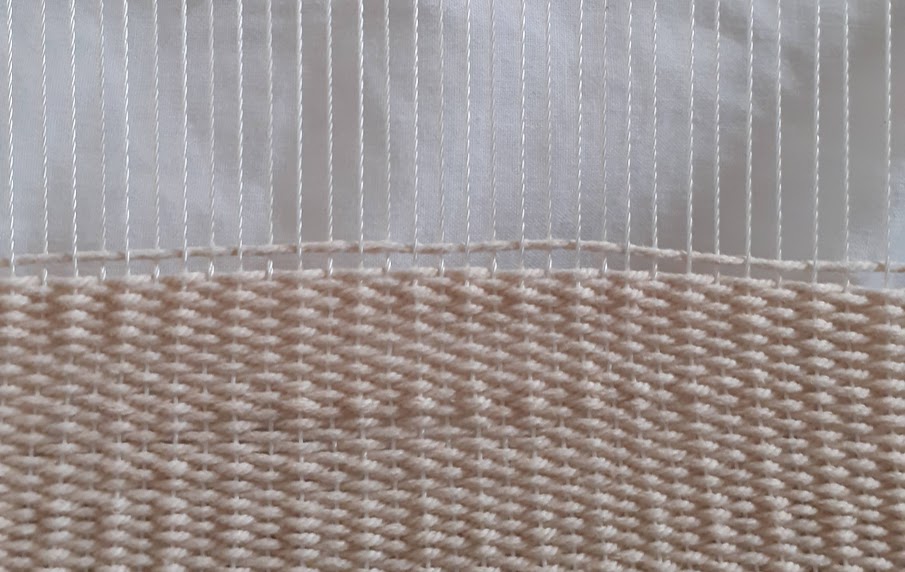Heather Jones: I sent a selection of questions to you prior to our interview to let you know the direction of our conversation today. Is there anything that you do not want to talk about, or anything that you want to make sure we add?
Juliane Foronda: There was one thing I was thinking of a lot: the question that started with “You describe yourself as a Filipina-Canadian…” To me that’s a very loaded question. Maybe this becomes an entire discussion in itself, but I don’t describe myself as Filipina-Canadian, that’s just who I am. Based on our previous conversations, I know it wasn’t coming out of malice or in a tokenizing way, but it’s a heavy question, for sure.
HJ: This feels important and I want to make sure I understand you. Can you elaborate?
*For readers’ reference, the question was: “You describe yourself as a Filipina-Canadian. You’ve also studied in Iceland and are currently based in Scotland, and have traveled extensively for exhibitions and residencies. I’m wondering how your heritage influences your work (if at all)? And more generally, how important are specific places in how you approach your work?
JF: I acknowledge that this is a highly sensitive subject for me, possibly because of the current socio-political climate, and how questions surrounding background and heritage are often only asked when your background is a globally marginalized one. For me it starts to bleed into who I am vs. what I do. There’s not a straight division between the two, but I don’t actively make work about being Filipina-Canadian and yet I’ve been confronted with questions about my background for most of my life. I don’t think the same labour is imposed on my Canadian peers of settler-colonial descent, or on my (white) Scottish or Icelandic peers unless their work directly confronts themes of heritage.
While I don’t shy away from talking about my heritage, my work isn’t centered in that, yet I’m often told that it’s either refreshing or unfortunate that I don’t make work about being Filipina-Canadian or an immigrant, and particularly in the last year and a half, I’m frequently asked to be involved in projects where the sole theme is being a POC. Because of this, I frequently wonder if the opportunities I’m offered are because of merit, or to check a box. I’m quite outspoken, and frankly very proud of my background, but it’s also not the only thing I am as an artist.
HJ: Thank you for that. I guess that’s also a problem with the succinct style of written interview questions as opposed to conversation. I recognize it’s a complex conversation, but I wanted to open up for it if there was something you wanted to discuss.
JF: I think back to when I started art school – 18 year old me would have really benefited from seeing a public conversation about heritage and immigration in an arts context. It’s long overdue and it’s not something I’ve seen enough of to this day. Also, 18 year old me would not have had the courage to say something. I think it’s important to speak up for the ones who don’t have the platform or the voice yet. And maybe the next time that question is written for an interview it could be worded slightly differently.
The one thing that I really take from my heritage regardless of the work I make, is that the privilege I have to work in the arts in general is a direct outcome of the labor and sacrifices of my parents. Especially the privilege of crossing borders – if my parents hadn’t immigrated to Canada, I couldn’t travel as freely as I do, because a Filipino passport doesn’t enable that. There’s also a constant pressure or expectation in the arts to function internationally, but that’s not realistic or possible for everyone for many reasons. For example, at this moment, I’m in Prague on an artist residency at MeetFactory for two months. Being a Canadian citizen allows me to more easily take on these amazing opportunities. I also have a Western education and CV that’s never been questioned the way that my parents’ were when we immigrated to Canada. You asked if my heritage influences my work – I think its influence is that I’m able to live and work as an artist on an international level because of my parents’ decision to immigrate and to take on all of that labor for my sister and I.
HJ: I was just going to ask that. It’s challenging for me to remember that something that is innocuous and innocent to me might land differently for another person. Topics of heritage and place could form a really rich conversation. How might it be possible to create an opening for this conversation, while recognizing that people may or may not react critically to questions of heritage and ethnicity?
JF: I really go case by case. When speaking publicly or in a public space, I’ve gotten into the practice of opening with an acknowledgement. For example, with the work I do around feminism, I always give an acknowledgement around the limitations of langauge with gender, so it’s clear that when I say “woman/women/womxn”, that I am inclusive of every person that identifies in any capacity along the spectrum, including, of course trans, intersex and non-binary folk. As a cis straight woman whose work is centered in feminism, this acknowledgement is necessary.
Regarding my work in care and hospitality, I always acknowledge the deep privilege I have to work within these themes when so many people are living through crises of land, food, shelter, and home security around the world. I make work about food, yet many are starving. I don’t take that privilege lightly. For me, an acknowledgement is an essential first step in establishing where I’m coming from, and what my perspectives are surrounding the conversation that’s about to take place.
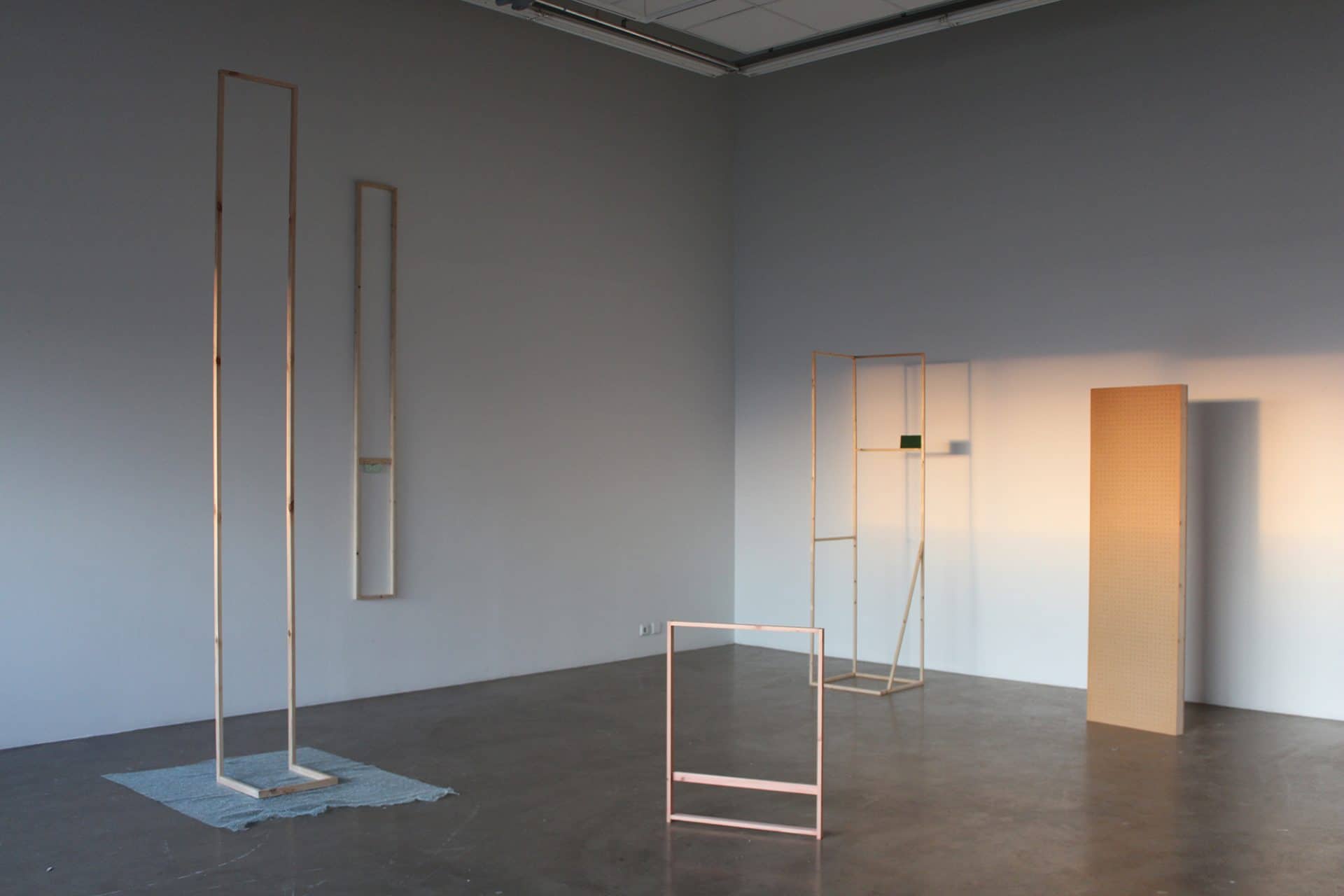
HJ: That’s a very useful piece of advice. Following on that, this might be a bit of a boring question. But I am interested in how and why you went to art school. Were you encouraged along your creative path? And from there, how did you become engaged with the topics of intimacy and hospitality?
JF: I was really fortunate that from a young age, my creativity was nurtured. That gave me a lot of freedom to explore more creative approaches not just for expressing myself, but also in how I think through the world, how I learn, and I was really fortunate to have parents and teachers who supported that. From my BA, I was mentored and encouraged by two professors in particular, Laurel Woodcock and Sandra Rechico, who really believed in me and pushed me to be involved in the local scene. As a very naïve 20 year old, I felt so capable because I had so much support behind me. The generous support from my MA professor, Bryndís Snæbjörnsdóttir and my thesis advisor, Hildigunnur Birgisdóttir, were crucial throughout my time in Iceland. So many strong women continue to unconditionally shape and influence who I am, and I’m very mindful of that privilege.
My parents have always been supportive. Neither of them are artists, but I do have artists on both sides of my family, so maybe it does run in some veins. I didn’t personally know much about the art background of my family until I was an adult, but it’s something that I very much cherish today.
In terms of the concept of care in my work, that was bubbling for a while but I perhaps didn’t have the vocabulary or experience to really realize what was going on in my much earlier work. I think the work about care that I’m doing now was really spurred on while I was in Iceland. I really struggled throughout my MA. I was going through a period of grief after losing a close friend and not really understanding what was happening to me psychologically while also adjusting to living in a new country. Iceland is culturally very different from Toronto. I was trying to understand care – or the lack of care – that was happening in a different sense than I knew. These things were at the surface of my day-to-day life, and that obviously affected the work I was making. I was there as a full-time art student so that was all I was thinking about.
The hospitality focus in my work came from a summer I spent working at Hospitalfield, which is an artist residency in Arbroath, Scotland. I was being hosted by the team at Hospitalfield as their summer program assistant, but was also responsible for hosting the residents coming in, and taking care of those logistics, all the while living together in one massive house. For me it was this interesting dynamic of being wedged between a host and guest all the time, and having to take on and accommodate different roles at different times.
I was able to bring these thoughts into my thesis year in Iceland. I found so much theory and research that I knew would take much longer than a single thesis to unpack. This eventually led to my time as a researcher at Glasgow Women’s Library (GWL), which is where I really dug into my research on feminist hospitality in relation to radical care. I was also fortunate to work closely with Caroline Gausden, who is the Development Worker for Programming and Curating at GWL, and whose research and interests lie in similar themes. I had the time and space to let that all explode into my current practice.
HJ: You spoke about different places like Toronto, Iceland, and Scotland having different expressions of hospitality and care. How do you approach that research as you enter new locations?
JF: I think about this a lot. One major lesson I learned from living in Iceland is that you can’t help or care for someone who doesn’t want it. And within that, also acknowledging that how we receive and desire love, care and intimacy differs not just by culture, but by person.
Iceland has a much more reserved culture than I’m used to. Not just from Canada but also from the Philippines. Filipino culture is intensely close and vibrant. The Glaswegian culture is very warm and welcoming as a whole, and quite similar in many ways to how I grew up. My experience of Icelandic culture was much more reserved, quiet and stoic. I had to shift how I knew how to try to get close to people, how I knew how to show someone that I cared. I very quickly learned there was not a global way of doing that.
One thing I learned in Iceland (this will potentially sound a lot sadder than it is) is that there’s a lot of power in realizing that no one cares about you. This helped me stop thinking, “what are they thinking, what are they wanting me to do, what are they desiring of me or needing from me. Will they like this artwork?”
When I realized that I didn’t fit in as well as I hoped to initially, for better or for worse, it gave me a lot of freedom to stop trying so hard to accommodate their version of care, and to focus on my need to care for myself. And that was a really big shift not only in my practice, but in my person. I came to understand the power of letting go when you realize it’s not working, and that sometimes letting go is the most caring act one can do. Freeing ourselves from the constraints of hospitality – or hostility… once you start unpacking the etymology of these words, you start to realize how these seemingly opposing things coexist.
HJ: As an American living in Scandinavia I can relate to that feeling. It’s also interesting to switch perspectives and think about someone needing to receive care as well as someone needing to care for another person.
JF: Definitely. And there’s a huge power dynamic in all of that. Like you said, sometimes if a person doesn’t want to be cared for, they’ll perceive it in a very different way. And of course care in itself does not have a single definition. It’s really complicated but deeply fascinating to think through what care means, and where and how it exists.
Also by showing care, specifically within the vein of support, you’re very directly making it known that that person needs support – whether or not they actually need it. You’re quite directly putting yourself up against that subject of concern and saying “let me step in here.” That could be quite a violent act in many ways. When you think of care, you don’t often think of violence. But many people let others, especially their loved ones, do things that could potentially harm them (not necessarily drastically) out of love for the other. So they put themselves down in order to allow for this other person to care for them in a way that doesn’t really care for them in the manner that they need it.
There’s a really curious play between people who genuinely want to care for each other but just don’t speak the same vocabulary. And I find it even more fascinating to consider acts of care in places where the care doesn’t exist to begin with, and yet there’s still an attempt to make it happen.
HJ: You mean on a surface level?
JF: I mean out of necessity or obligation over genuine desire. Which happens a lot more than we like to admit. And for me, this often occurs in my familial heritage through the Filipino culture of hosting. To this day, I’m always asking myself, “Do I want to do this? Why do I feel like I have to do this? Is this something important to me? Does the person want this?” Having to work through these notions to accommodate everyone’s comfort levels is something I’m constantly processing.
HJ: This is obviously a rich vein of research. I’m curious about if you think art, writing and artistic research have something specific to offer this field of study, as opposed to anthropology, sociology or other more analytical fields of research around these same topics.
JF: The field of care and hospitality obviously extends into notions like food and intimacy. To me, these areas are quite directly linked to psychology, sociology, anthropology, all of that stuff, but I think art allows a bit more space to breathe into humanity in a less academic, clinical, or statistical way. Of course it’s important to pull from all of the research that’s been done over the years, and to express it more creatively – one that might allow others to think about it in a different way.
I’m also a natural collector (or hoarder) of curious things and thoughts. So for me it’s natural to try to make something out of what I’ve gathered, whether in writing or curatorial work or art making. The research alone will only go so far if it’s not shared. Within the vein of care and hospitality, it’s quite a powerful thing to find generative ways to share what I’ve learned in a hopefully more digestible way. It’s a special thing to get to do.
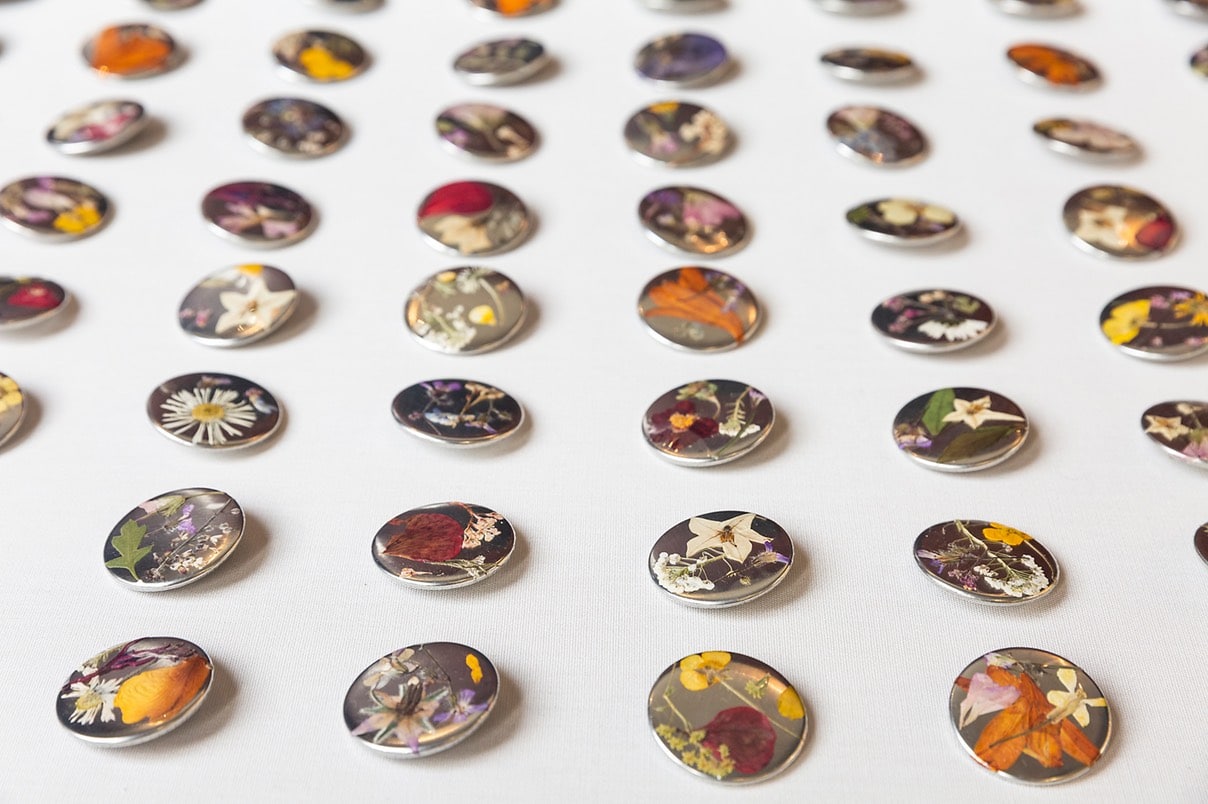
HJ: This sounds as if the thought process is foremost before whatever the physical outcome is. Is that true, or can you elaborate further on your process?
JF: With the type of work I do, it’s only fair to tackle each work in a unique way. Especially when I’m thinking through weird and specific things, there’s not a single way forward. Sometimes I get a specific idea in my head and it just starts. Sometimes it takes a while of me mulling through archives or research, or going out for dinner, or watching reality TV, or any way that I gather research before it just hits, “Oh, this is something. This is an artwork.” There are many different paths. And the way I research is so nonlinear that it doesn’t make sense to make artwork in a traditionally systematic way.
As an example, I made these button badges with wildflowers for an exhibition in response to my research at Glasgow Women’s Library. This work came from going on walks to clear my head. I started picking and pressing these flowers in books I was reading, and I eventually realized that something was happening – symbols were forming and an archive was being built. It made sense to press the flower archive into buttons because of the tradition of button badges being worn by all GWL staff and volunteers as a gesture of welcome and hospitality. So that work kind of made itself just by bringing certain things together, just by their existence.
Previous bodies of work have come from periods of (over)thinking about something random, vague or obscure like furniture, for example, like for my MA thesis. At that time, my research looked like going to write in Ikea for a bit. I’d look at vintage furniture websites, or spend a few hours in the wood shop just touching and smelling the different woods. There are so many weird trails I end up on, and maybe they eventually become something, but also maybe they just get tucked away in my personal archive for later.
HJ: What you just said about smelling wood brought me back to my previous question about what art has to offer that maybe more analytical fields don’t or can’t. Your practice seems to include the body and the senses in relation to hospitality, intimacy, and care.
JF: I’m very aware of my senses when I make work, and also how work is experienced. I’m making these diagram things on medical paper right now and I’ve been walking around them and noticing how they move, how my presence is a very active component in completing the work.
And if it’s an edible artwork, obviously taste and smell are pivotal to the experience. I definitely think that activating all of these senses is a huge thing. It’s massive. I also realize that working in the arts, I have a very biased tunnel-vision view of it. Sometimes seeing a really good artwork or exhibition can make me salivate and I want to get right up close to it, but I also realize that’s not everyone’s experience entering an exhibition space.
I think about how work affects people in different contexts as well – I think less of something being site-specific, but more site-aware, meaning being aware of where work is placed, how it will exist, and who will interact with it. I really consider who will experience my work and how they can experience it in the most satisfying way (of course from my very biased perspective). To me, that’s the finishing piece.
HJ: In terms of the viewer experiencing something, do you have a goal? You mentioned earlier that the work makes itself, yet you’re also very aware of how people will be interacting with the artwork. How do you think about the viewer, and is there something that you want them to take away after they experience one of your works?
JF: I think there is always a hope. But I also realize that that’s never guaranteed. I can’t force an experience on someone. I think of this often in direct relation to my work in care. I can’t force someone to feel as connected to flower buttons as I do. I realize that the majority of the “art world” is a deeply elitist, exclusive, and intimidating community. When you’re part of it, it feels great, but when you’re not, it can be the most polarizing experience. It’s a glaring reality of the field that I can’t ignore, but one that constantly leaves me frustrated.
It sounds cheesy to say, but I wholeheartedly believe in the power of art. I know it’s not the answer to a lot of our global problems, but I really believe that it is integral to our world – it’s so powerful. It’s something that I want to share with people, and not just people who have already spent 4-10 years in art school. So I often ask, “how can people like art more? What kind of art do kids want to see? How can I encourage my friends who aren’t in the arts to want to come into a gallery?” Making space in the arts for “non-art” people to feel welcome is something I’m really interested in.
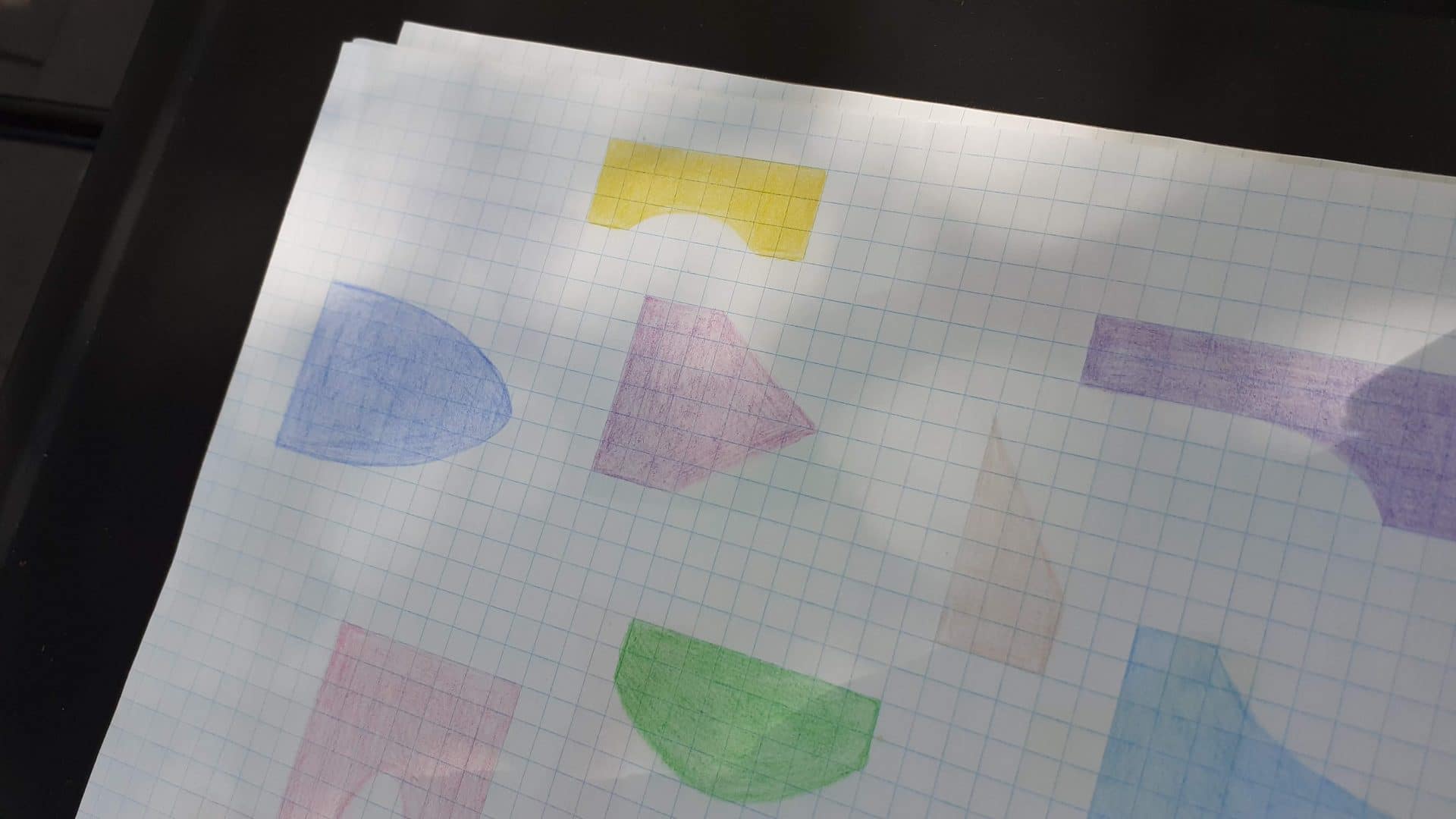
HJ: So how does that practice of making relate to writing and curatorial work for you?
JF: After my undergrad, I worked in a commercial gallery, at an artist-led space, and as a freelance studio assistant – basically a ton of random art jobs to get by. These experiences really opened my eyes to all the various roles within the arts. I realized that there doesn’t need to be a hierarchy, that every role serves a function, and caters to a different interest. Not everyone who works in the arts wants to be an artist, and I can see how all the roles can have their appeal. I’m invested in putting all my effort into elevating the art (the concept) as much as I can whether that’s through writing or curatorial work, or through making.
With curating, my interest is specifically in bringing works or people together who may not have been able to come together independently. To bring artworks that may not be obviously related into a space, and start a conversation in response to these works is quite a powerful thing to get to do.
A lot of people think that you can’t be an artist and writer and curator, but I think you can. I just personally can’t be all of those at the same time. I’ve seen shows where someone includes themselves in an exhibition that they’ve curated, and maybe they wrote the exhibition text as well. To me, that feels as though these roles are not being honoured for how powerful they are independently. They’re not giving themselves enough space to.
I’ve learned that taking on various roles in a single project is not a generative or intentional way of creating for me. I think I need that division to embrace my given role at the time, and commit to it 100% instead of trying to divide myself and do all of them all the time. Writing may swing more directly into my art practice as some of my works are text, though this is obviously not the same as writing an exhibition essay, critique or interview.
I often go through waves of doing a lot of writing and not really making art, and then I’ll go through a stretch of doing nothing but making art, and not wanting to touch an article or curatorial project … so I think I just kind of let myself do what I want… [laughter] I don’t know how to say that in a less ignorant sounding way… I try to honor how I feel creatively.
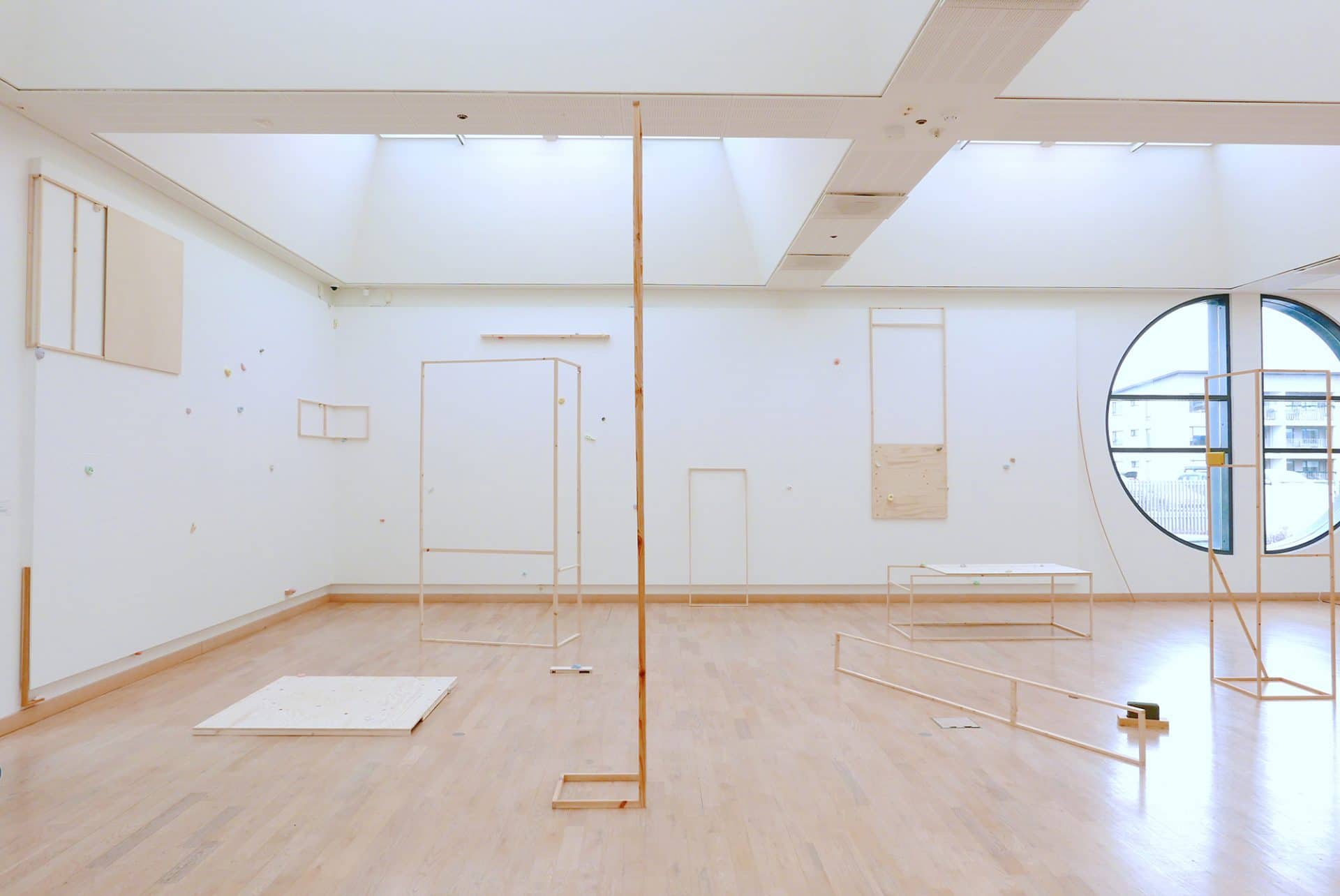
HJ: I haven’t heard anybody else bring up the concept of responsibility in terms of how you address these roles. What am I responsible for in the role of a curator? What am I responsible for in the role of a writer or an artist? That seems like a really good question to ask. It’s profound to shift the perspective from output to responsibility.
JF: I’m continually learning the integrity of those different roles from my community. Right now I’m working with a curator, Letticia Cosbert Miller who is brilliant in way too many ways to name. It’s my first time intensively working with a curator for a full year towards a single project. It truly feels collaborative, and the amount of support and encouragement I’ve received, and how carefully yet confidently she works – these are all things that I hope to carry into the next time I take on a curatorial role.
You also learn by experiencing and by doing – that just goes for life in general. There are certain moments that have really stuck with me. Like when I was a studio assistant for Roula Partheniou, an incredibly thoughtful and clever artist, who is now a good friend of mine. I was a 20 year old art student, initially working as her intern and she would always introduce me as “my friend Juli,” never “my intern” or “my assistant.” She always introduced me as a friend. That’s something that’s always stuck with me; the importance of language and how you refer to someone. I carry all of these experiences and lessons into my day-to-day practices.

HJ: That leads me to questions about how you work with people more generally. But I’m curious to hear your thoughts on collaboration. Your work is so much about care, hospitality and intimacy, and you also physically collaborate with Ieva Grigelionyte in your collective practice salt. How do you approach collaboration within your practice?
JF: salt is my first true collaboration in terms of shedding our individual names and becoming a separate entity, which is a testament to Ieva and I’s friendship and our mutual respect for one another because I don’t think either of us are natural collaborators in a traditional sense.
While we work within similar themes in our individual practices, there’s never any ego between the two of us on that. We know when it’s a salt project or when it’s an individual one, and if we think that a project is more powerful to do together, then we find a way to realize it. We are both quite independent and private by nature, and have specific visions of what we want, but the collaboration happened very naturally. salt was conceived over our morning coffee and snowballed from there into something really special. We were friends and flatmates well before salt came about, so we knew each other not just as artists but as close friends. There’s a particular magic that occurs when working through themes of food and hospitality with another woman, and specifically one that I have endless respect for.
Otherwise, I do like using curating and writing more as a means of collaborating with others in a way that I haven’t previously as an artist. I really like doing interviews with artists, curators, and writers, and being able to pick apart their brains in that way. And of course curating is definitely an action of trust, to collaborate with anyone in that capacity.
HJ: In terms of your art practice, you mentioned earlier how you became aware of the structures of the art world, and that a hierarchy is unnecessary. As an artist, do you consider an exhibition a collaboration with the space for example? How do you navigate your relationship with the work that you’re making and your relationship(s) to the place or people that you’re working with?
JF: I think it’s definitely a collaboration, although I don’t know that I would officially call it that. But I think it exists within the general understanding of collaboration. I’m very cautious of places tokenizing, or being unaware of the labor imposed on people of color, women and other individuals/groups in the global margins. I’m very careful with whom and where I work, understanding that today my face, name and background mean a lot more than it did 5 years ago. I do a lot of research on the places I apply to or accept opportunities from. I think it’s important to initiate conversations and ask difficult questions if the answers are not evident before jumping to conclusions.
My personal responsibilities in these “collaborations” extend to every corner of each role I take. For example, when I’m writing articles or exhibition reviews, I’m not only thinking of who I’m writing about, but am I using diverse references? …Actually I don’t really like the term diverse, but I mean that I’m constantly checking in with myself on whose voices I‘m elevating and giving space to in every aspect of my work. Maybe normalize is a better word rather than diverse.
In the art world in particular, as much as we all have our individual egos, we can’t survive without community and collaboration, we can’t exist in a bubble. Any time you enter into these engagements, whether as an artist, curator, writer, or viewer, you’re already in a collaboration to some capacity.
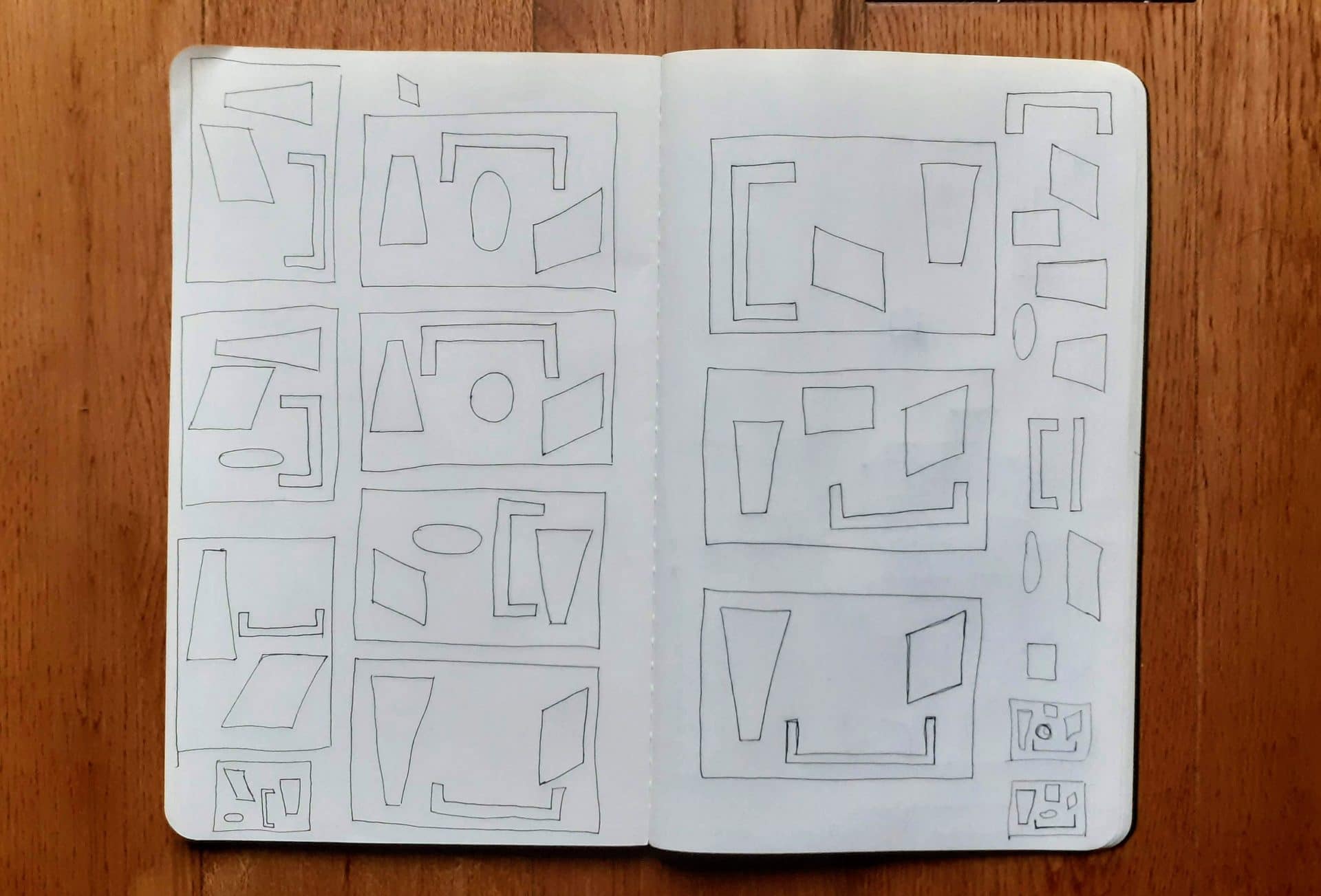
HJ: You brought up your distaste for the term “diverse.” In an interview about his book My Grandmother’s Hands, Resmaa Menakem challenged the ubiquitous use of this term by succinctly asking “diverse from what?” What do we actually mean when we say diversity?
JF: Exactly, it’s similar to the term “marginalized.” Whose margins are you talking about? The global majority is the “margins” in my community. Words are powerful. It’s so easy to use buzzwords, but to really unpack what words mean takes a lot more effort.
HJ: You work so much with hospitality and care, and you also touch on issues of feminism, for example with your work for the Glasgow Women’s Library. How do you think about the relationship between ideas of hospitality and care, which have been often stereotypically seen as a female sphere, and feminism, which has often derided these ideas?
JF: The two main questions I started asking myself, specifically when I was working at Glasgow Women’s Library are:
- Do we as women want to…?
- Why do we have to…?
I still think of this often as someone who genuinely loves cooking, hosting, and other traditionally domestic jobs. A woman can do “more” than that but what if a woman wants to do that? It’s something I’m always picking apart. Is this something I have been conditioned to want by society? Is the desire to feed people something inherent in me as a Filipina? Is this embedded in my DNA in some way, or is this something I have been conditioned to believe because of how I’ve seen women throughout my life, both professionally and in my family home? Is this me? Is this patriarchy? Is this societal conditioning?
I don’t think there’s a single answer. I think it’s a huge question in feminism, and it reminds me of something Roxane Gay wrote in Bad Feminist: “
Feminism is a choice, and if a woman does not want to be a feminst, that is her right, but it is still my responsibility to fight for her rights. I believe feminism is grounded in supporting the choices of women even if we wouldn’t make certain choices for ourselves.”
If a woman really wants to be a homemaker, that’s fine. That doesn’t mean she’s not also a feminist. If a woman refuses to be in the kitchen because of xyz, that’s her prerogative as well. It allows for more space for what a feminist can and should be.
When I say I work within themes of feminist hospitality, a lot of times I get the pushback like, “oh, you just hate men.” And that’s not at all what it is. It’s important to open up these conversations and question what it means to host in a feminist capacity. Perhaps it means to care for yourself and the women around you so that they’re not feeling the burden of constant care that often falls onto women in a domestic space. And recognizing that this labor has been imposed because of gender over generations. If they don’t want to do it, they shouldn’t have to do it. But if they want to do it because that’s how they know and want to show care, that’s no one else’ business either. Is doing something traditionally domestic or “feminine” anti-feminist? I don’t think it is.
HJ: You just pointed to the concept of recognition. There is a feeling of wanting to do something or not wanting to do it. But then there’s also wanting to do something but also wanting it to be recognized as labor.
JF: Yeah that’s a huge thing, acknowledging that labor. I’ve thought about this a lot in my research – I’m thinking of when you’re hosting a dinner party. If the laundry is out to dry and the table is not set, it’s conventionally understood that all of these things need to happen in order to host. You have to hoover the whole house, do all of these different things, and none of that is supposed to be seen; none of that is ever acknowledged. And usually that labor falls on women for many reasons.
So then what is the solution? Is it acknowledging the labor? Maybe that’s all it is… And is it me (the host) who has to acknowledge the labor? What does this look like? Is it not feeling pressured to have dinner completely ready when my guests arrive? Is it ok that I don’t sweep my floor before people come over for a dinner party? It is ok if I don’t sweep my floor before people come over for a dinner party!
I think it also involves checking in if a certain action is something I want to do. Does this feel important to me, or am I doing it out of pressure or (societal) obligation? Is this a responsibility that I don’t want to have and I don’t think I need to have in order to still take on a hosting practice? Do I still have to mop the floor? I’m already making everyone dinner. I don’t think I need to do that.
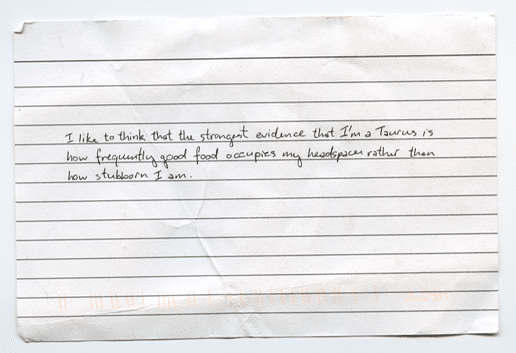
HJ: Due to everything that has happened over the past year and a half, there have been a lot of conversations about concepts like fair divisions of labor within the home, emotional labor, mental load, etc. These are really tricky and nuanced topics, but crucial to bring into larger conversations about labor and fair remuneration.
JF: I think it’s about acknowledging other peoples’ labor on top of yours. Labor in itself is a big thing I think about a lot. So much labor goes unacknowledged, and that also feeds into this friction in care. Labor doesn’t need to be such a taboo subject.
People think that hosting should be effortless, that’s what’s been said over the years. The sign of a good host is that you don’t even see the host or hosting present, that things just happen. But the amount of work to make things “just happen” is ridiculous! And to me it’s almost the other way. I feel most at home when people aren’t even trying to host, and we’re just hanging out. But I also know that that’s not everyone’s perspective. I personally like it when people just act a bit more normal. I feel better as a guest. Like, OK they didn’t feel the need to put away their laundry. I can relax.
Juliane Foronda (she/her) is a Filipina-Canadian artist, organizer and writer. Her practice is invested in notions of radical care, feminist hospitality, and traditions of gathering. She works predominantly through object, intervention and text.
Juliane received her MA in Fine Arts from Listaháskóli Íslands/Iceland University of the Arts in 2013, and her BA in Studio Art from the University of Guelph in 2018. She’s currently based in Glasgow, Scotland and Toronto, Canada.


